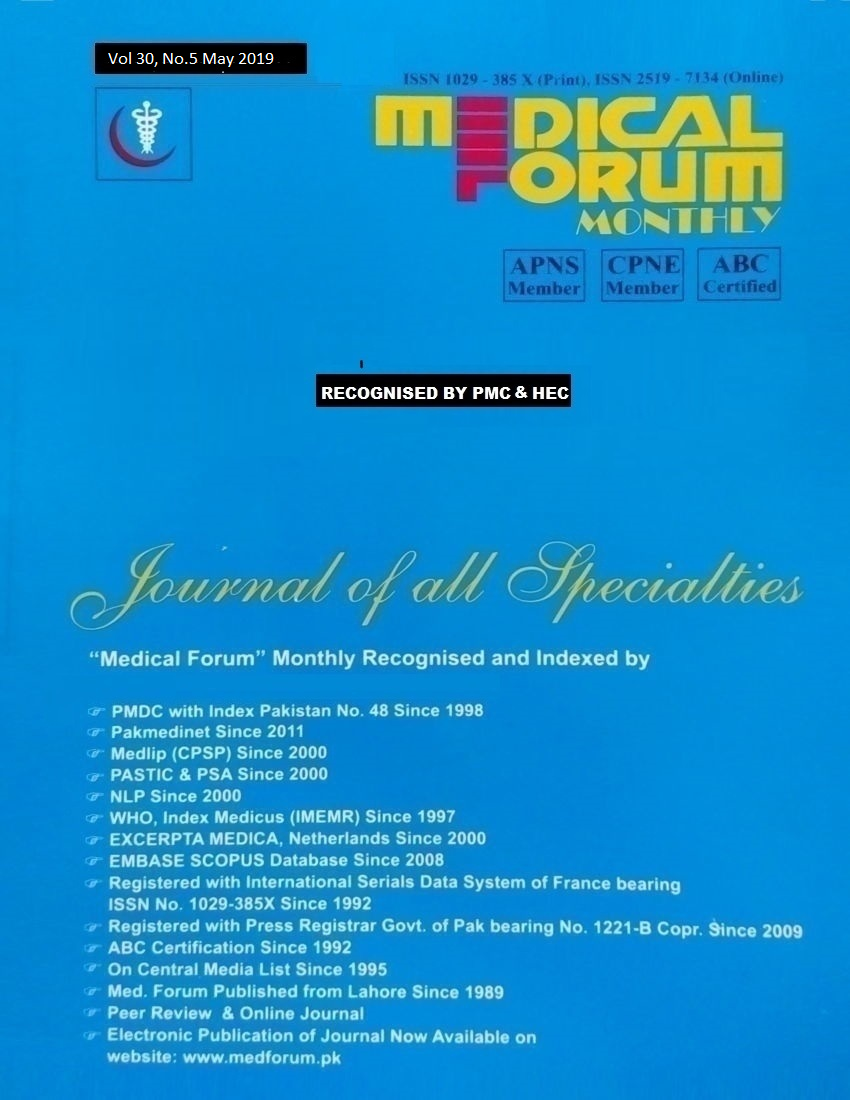
1. Clinicians Diagnostic Accuracy and Management Practices for Benign Anorectal Disorders
Muhammad Taha Junaid1, Atif Mahmood2, Faria Khan3, Ali Akbar2, Hamza Akhtar4 and Safdar Ali4
ABSTRACT
Objective: Hemorrhoid is the most popular diagnosis for patients coming to the doctors with anorectal complaints, especially with bleeding from the anal region. This has caused many serious anorectal problems to be ignored resulting in increased morbidity and mortality. This raised the need to determine the diagnostic accuracy of surgeons, physicians, general practitioners and medical students for common benign anorectal pathologies and measuring the impact of years of experience on the diagnostic accuracy as well.
Study Design: Cross sectional study
Place and Duration of Study: This study was conducted at the Department of Surgery, Abbasi Shaheed Hospital and JPMC, Karachi from October 2017 to May 2018.
Materials and Methods: Seven common anorectal disorders were selected, including, prolapsed internal hemorrhoid, thrombosed external hemorrhoid, anal abscess, anal fissure, anal fistula, condyloma acuminata, and full thickness rectal prolapse. Non-probability purposive sampling included medical students, general physicians, postgraduates of Medicine / Surgery, registrar or senior registrar, residents of Medicine / Surgery, and fellows of Medicine / Surgery. Subjects were given a self-administered questionnaire which included several questions, including demographic questions, image identification and management related questions. Evaluation was then done to compare diagnostic accuracy for different specialties and to see the correlation between diagnostic accuracy and years of experience.
Results: The overall diagnostic accuracy of surgeons was the best among all specialties at 72%. Medical students had overall better diagnostic accuracy than Physicians and GPs at 57%. The overall diagnostic accuracy of Physicians and general practitioners were almost the same, at 49% and 48% respectively. Doctors with less than 5 years’ experience show an overall diagnostic accuracy of 66%. Years of experience had no correlation in the improvement of diagnostic accuracy for all specialties.
Conclusion: The diagnostic accuracy for common benign anorectal pathologies for all types of specialties was suboptimal and Multidimensional continued medical education programs are needed to update the knowledge of clinicians in this regard.
Key Words: Internal & External hemorrhoids, anal abscess, anal fissure, anal fistula, condyloma acuminata, full thickness rectal prolapse
Citation of articles: Junaid MT, Mahmood A, Khan F, Akbar A, Akhtar H, Ali S. Clinicians Diagnostic Accuracy and Management Practices for Benign Anorectal Disorders. Med Forum 2019;30(5):2-6.
